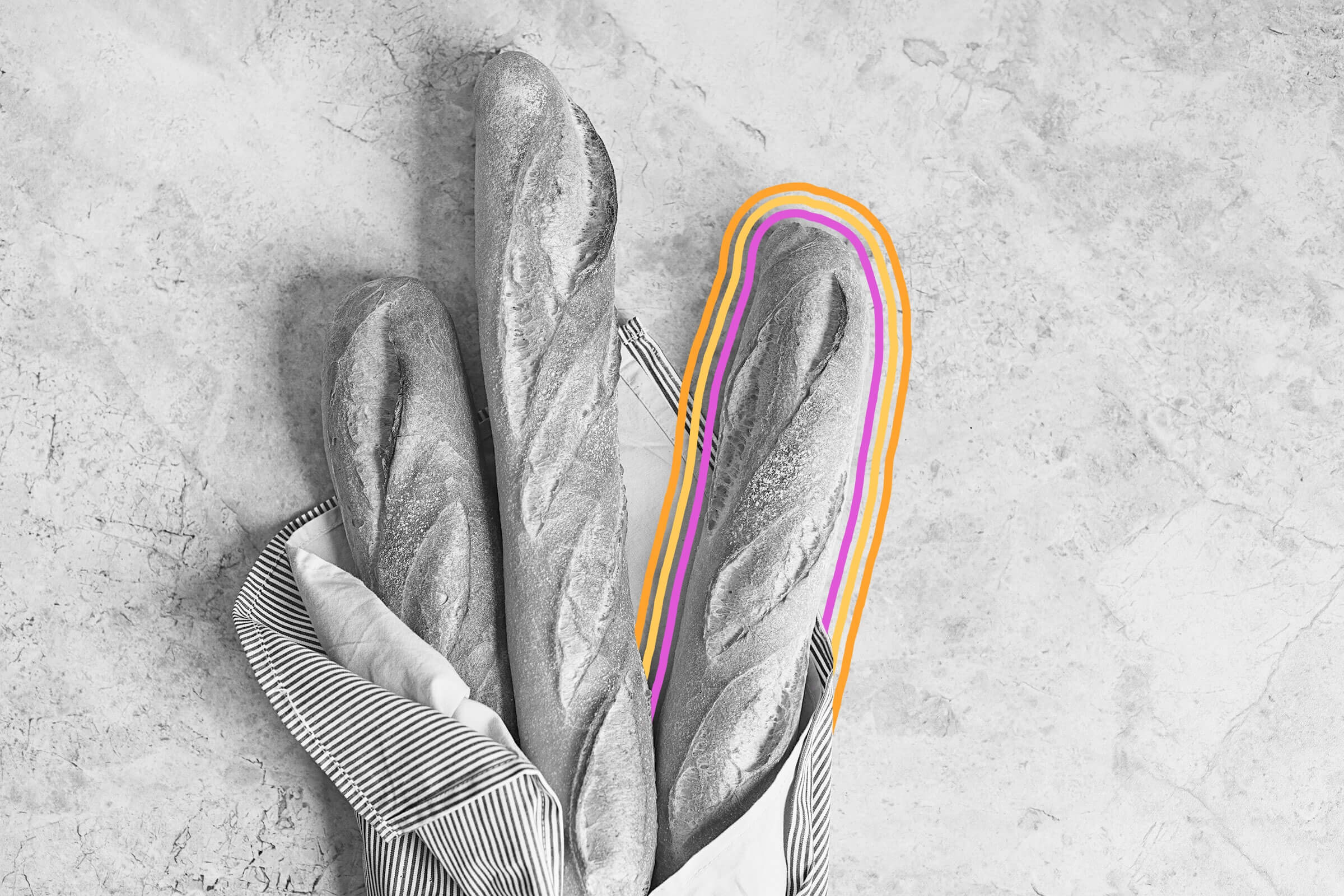

With the earliest known recipes dating back thousands of years, bread is an engine of history. Its discovery may have kick-started humanity’s transition into an agrarian society, its chemistry created new foods and beverages intimately tied to the cultures that made them, and its availability has often been directly proportional to the rise and fall of kingdoms and empires. Learn more about everyone’s favorite starch-filled staple with these six amazing facts about bread, from the chemical reactions occurring in your oven to the world-changing events it inspired.
Bread Is Made From Fungi

The single-celled organism known as yeast is the engine behind the bread-making process. Once this microscopic fungi is fed simple sugars, the yeast essentially burps up carbon dioxide and ethanol, along with flavor molecules, in a process known as fermentation. This buildup of CO2 and alcohol is what causes bread to rise, and evidence of these gassy expulsions can be found in the holes that form in baked bread. Sourdough starters are made by mixing flour and water and allowing natural yeasts (which can be found in the very air we breathe) to start munching on the carbohydrates. These starters, which are essentially live organisms, can live indefinitely if fed and stored properly. More than 130 of them, from 23 countries, live at the Puratos Center for Bread Flavour in Belgium — the world’s only sourdough library.
The Earliest Evidence of Bread Is 14,000 Years Old

In 2018, archaeobotanists from the University of Copenhagen were working in an excavation site in Jordan, an area where a hunter-gatherer tribe known as Natufians lived some 14,000 years ago, when they stumbled upon bits of charred food remains. After closer examination in a laboratory, it became clear that these were bits of breadcrumbs from a time millennia before scientists had believed bread-making really took off. The news was particularly surprising because scientists usually see bread-making as a result of the rise of agriculture, the innovation largely responsible for forming modern society. However, this discovery suggests that it could be hunter-gatherers’ preexistent interest in bread-making that inspired the rise of agriculture — not the other way around.
Bread Is the Main Ingredient in the World’s Oldest-Surviving Beer Recipe

Bread has been central to our diet for several thousand years, and it’s also been central to our social life. Written in 1800 BCE, the “Hymn to Ninkasi” details a step-by-step recipe for Sumerian beer-brewing in Mesopotamia (modern-day Iran). The text describes the ingredients involved in the process, most crucially the beer bread known as bappir that introduced the required yeast for fermentation.
In 1989, San Francisco’s Anchor Brewing Company recreated the Sumerian concoction, deeming the resulting beverage “drinkable.” Although the “Hymn to Ninkasi” is the oldest-known beer recipe, it’s likely that one of the world’s most popular alcoholic beverages has an even older origin story. Traces of beer in jar fragments have been dated to around 3500 BCE, and some archaeologists expect beer could be as old as — or even older than — bread itself.
Bread Helped Ignite the French Revolution

Bread can be a major player in world events — and events don’t get much bigger than the French Revolution. This transformative moment in the late 18th century was triggered by multiple forces, including changing philosophies, gross inequalities, and a bankrupt monarchy, but some experts argue that the spark that ignited the revolution might have been bread, or more specifically the lack thereof. France’s rising population, heavily grain-based diet, and inability to keep up with demand led to a crisis of bread scarcity that bled into popular outrage. An English agriculturalist traveling through France at the time even commented that “the want of bread is terrible; accounts arrive every moment from the provinces of riots and disturbances, and calling in the military, to preserve the peace of the markets.”
In fact, one of the French Revolution’s most famous anecdotes belongs to France’s Queen Marie Antoinette, who upon hearing of the peasants’ struggle for bread, supposedly replied, “Let them eat cake.” Although historians believe the queen never actually uttered these words, the famous line exemplifies the suffering of the French people and the perceived indifference of its government.
Before the Invention of the Eraser, People Used Bread Crumbs

Although the very first mass-produced pencils arrived on the scene in the 1600s, English scientist Joseph Priestley (discoverer of oxygen) didn’t describe “caoutchouc,” or rubber, as an excellent material for “wiping from paper the mark of black lead pencil” until 1770. (Priestley was the one who renamed it “rubber,” because it could be used to rub out marks.) Before the arrival of the rubber eraser, people often used small pieces of lightly moistened bread to erase pencil mistakes. However, these bread-based erasers succumbed to mold, and eventually, rot. Let’s just say the rubber substitute was a welcome innovation.
Sliced Bread Was Invented in 1928

“The best thing since sliced bread” is a phrase celebrating the most glorious of innovations — but it turns out, sliced bread itself isn’t even a century old. The first bread slicer was invented by Otto F. Rohwedder, who worked on his machine for 16 years before it was first used by a small bakery in Chillicothe, Missouri, in 1928. Rohwedder’s invention went against the common thinking among bakers who believed that sliced bread would go stale too quickly. However, customers proved this conventional wisdom wrong, and the bakery’s sales reportedly increased by 2,000% in just a couple of months.
